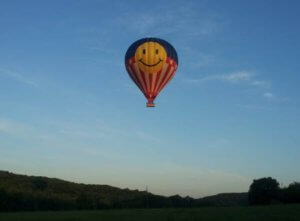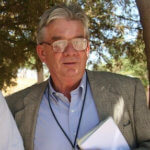After a deadly balloon crash killed 16 people near Lockhart last summer, my boss, projects editor David Sheppard, asked me to look into the safety record of the hot-air balloon industry and find out how someone like Alfred “Skip” Nichols could be allowed to pilot balloons with a string of DWI convictions on his record.
Here’s what we found out in a five-month project called “Adrift.”

Despite the peaceful, romantic image of the sport, balloons suffer higher crash rates than other types of aircraft.
While there’s no question most flights in the United States are carried out safely, the average accident rate for balloons was 15 crashes per 100,000 flight hours from 1993 to 2006. That’s twice as high as the average crash rate for other general aviation aircraft — seven crashes per 100,000 flight hours.
The same pattern emerged in more recent federal data from 2012 to 2014 — the crash rates were nearly identical, and still twice as high for balloons.
Related: Mechanical problems with your plane? Check its safety record online
The NTSB also published a report that compared the crash rate of air-tour operations for balloons, airplanes and helicopters from 2004 to 2009. Balloons had “very high accident rates” during that period, the report noted, that were higher than fixed-wing aircraft and helicopters.
But the Federal Aviation Administration doesn’t require balloon pilots to take drug tests or undergo medical evaluations like other pilots. In fact, it rejected proposals from its own expert and the National Transportation Safety Board that would have mandated drug tests for commercial balloon pilots.
On the day of the crash near Lockhart, Nichols had been on a “witches’ brew” of prescription medications in his system that included the painkiller oxycodone, Valium, and a muscle relaxant that’s prohibited by the FAA.
We compiled all the documents released by the NTSB and our Freedom of Information Act requests into a vast, searchable library on DocumentCloud. Type in keywords for things like “DWI” or “Valium” to find official records that discuss those topics about the crash near Lockhart.
There’s already been excellent reporting on this terrible story. Publishing a project like this helps tie everything together in a long narrative that helps drive home just how egregious this tragedy was — and how it could have been prevented.




John… great article on the Lockhart tragedy. I lived the tragedy by your sensitive account and was saddened. I note that our Representative Doggett has a keen interest and encouraged the FAA to increase oversight which it seems reluctant to do. After the Colgan crash, Congress investigated and compelled the FAA to develop the “ATP Rule.” Does the Congressman or any Texas legislator have any interest in launching a hearing compelling all sides to testify not so much on the cause of the accident but the way forward? What is the so-called “burden” that the BFA addresses? Why is the FAA reluctant to bring commercial balloon operations to the same level of safety of airplane and helicopters? Too much of an annoyance? Maybe Congress should ask the question and take a hard look. Can the paper plant the seed? A nice editorial!
Thanks.
From Wikipedia…
United States House Transportation Subcommittee on Aviation has jurisdiction over all aspects of civil aviation, including safety, infrastructure, labor, commerce, and international issues. All programs of the Federal Aviation Administration (FAA) except for research activities, are within the purview of the Subcommittee.
The Aviation Subcommittee is also traditionally the lead subcommittee with jurisdiction over the National Transportation Safety Board (NTSB), the federal agency responsible for investigating civil aviation accidents and other transportation accidents.
Members, 115th Congress Edit
Frank LoBiondo, New Jersey, Chairman
Don Young, Alaska
Jimmy Duncan, Tennessee
Sam Graves, Missouri
Duncan D. Hunter, California
Blake Farenthold, Texas
Daniel Webster, Florida
Jeff Denham, California
Thomas Massie, Kentucky
Mark Meadows, North Carolina
Scott Perry, Pennsylvania
Rodney L. Davis, Illinois
Mark Sanford, South Carolina
Rob Woodall, Georgia
Todd Rokita, Indiana
Barbara Comstock, Virginia
Doug LaMalfa, California
Bruce Westerman, Arkansas
Paul Mitchell, Michigan, Vice Chair
Jason Lewis, Minnesota
Rick Larsen, Washington, Ranking Member
Eddie Bernice Johnson, Texas
Daniel Lipinski, Illinois
André Carson, Indiana
Cheri Bustos, Illinois
Eleanor Holmes Norton, District of Columbia
Dina Titus, Nevada
Sean Patrick Maloney, New York
Julia Brownley, California
Donald Payne Jr., New Jersey
Brenda Lawrence, Michigan
Mike Capuano, Massachusetts
Grace Napolitano, California
Steve Cohen, Tennessee
Hank Johnson, Georgia
Rick Nolan, Minnesota
Ex officio
Thanks for the comment, that’s a good point about the different responses from Congress. We had a follow-up story that touched on those points: http://www.expressnews.com/news/local/article/After-deadly-Lockhart-balloon-crash-Congress-10999062.php?cmpid=twitter-premium. Thanks for reading.